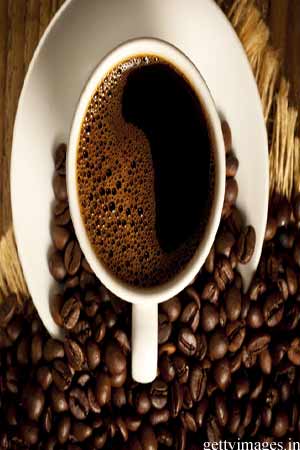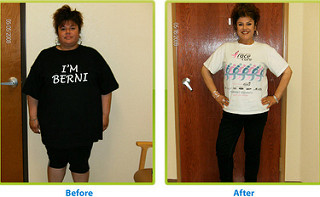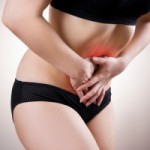All Fat Does Not Jiggle
"She's not Fat, she's just a Big Girl"
Just because it doesn't jiggle doesn't mean it's not fat !
If I could just have a dollar for every time I have heard a girl say that she doesn't like to train legs because they get too big, or a gentleman tell me how he's not fat, he's just solid. I have news for you all ... it is FAT!
There are different ways in which our body stores fat.
1. SUBCUTANEOUS.. The most obvious in fat that is held underneath the skin. This subcutaneous fat (under the skin) is what we see as rolls or that dimpled cellulite. It has mind of its own and you cannot flex it or suck it in. You cannot hold your breath and have a double chin tighten or a flabby arm feel firm. This fat is the ugly stuff that is shunned by society.
2. IMTG ... INTRAMUSCULAR TRIGLYCERIDES. Droplets of fat can also be stored in muscle and it gives the appearance of a more 'solid' physique, it is this fat that is often mistaken for muscle. Fat is also stored in the not so pretty muscles, like your heart and other organs.
Men and women matched for training experience and performance ran for 90 minutes at 65% of their VO2 max. 42% of the calories used in the women were from fat, of the calories used by the men only 20% came from fat (Tarnopolsky et al 1990)
Interestingly women are known to burn more fat (as a percentage of total energy expenditure) than men during exercise.
We are able to know this as we can test the 'Respiratory Exchange Ratio' (RER). The RER tells us the rate of carbohydrate and fat utilization based upon how much carbon dioxide is produced in our breath compared with how much oxygen we consume.
During exercise up to 50% of the fat used as energy comes from fat that is held within muscle (IMTG) the rest comes from that fat held under the skin and from the fat in our blood. In women there is strong evidence to show that women use a greater amount of IMTG during exercise. This will all be explained when I discuss how fat is actually broken down and vanished from the body, but for now, consider this. If women do indeed burn more intra muscular fat during exercise than do men, then wouldn't that explain the frustration that we feel when we see very little difference for all our hours of training. We only see that subcutaneous fat that sits as rolls underneath our skin and we are less appreciative of the fat breakdown that occurs within the muscle.
VISCERAL FAT
You can't pinch it and it won't jiggle or have dimples. Visceral fat sits deep inside the abdominal cavity and it surrounds your vital organs.
It is absolutely the most dangerous fat to have, yet ironically it is not the 'stubborn' kind of fat that hangs around despite all efforts. Duke University concluded that moderate exercise (30 minute brisk walk) can keep visceral fat at bay and by increasing the intensity you are able to get rid of the toxic tissue all together.
Sedentary people will see visceral fat accumulate year after year, this is no joke. It might be great to balance your beer can on but visceral fat is undisputedly a precursor for Insulin resistance (and so Type II diabetes), hypertension and cardiovascular heart disease. This is the stuff that will affect your quality of life and ultimately the length of your life.
There seems to be a strong hormonal influence with multiple endocrine associations being linked to visceral fat. Elevated cortisol and insulin levels are the villains but they are accompanied by higher androgen levels (in women) lower testosterone levels (in men) and lower growth hormone levels in both men and women.
Both men and women have androgens. Androgens are thought of as steroid hormones that are responsible for the masculine traits, but everyone has them and they are in fact a precursor for all estrogens. However in some women the androgen levels may be higher and then we see more of the 'apple' shape, the women with slimmer hips but wider waists. It is therefore also linked to estrogen levels and when estrogen levels drop (menopause), women experience the 'middle aged' spread when they add weight to their mid section, an area where they had been unaccustomed to holding on to weight. Estrogen hormone therapy can reverse this affect but the shift to abdominal weight is a common occurrence in both men and women as they age. As we age men see their testosterone levels drop and women experience a drop in estrogen. In both cases, our own growth hormone levels are declining from about the age of 30 onwards. While this downward shift is taking place we might unknowingly be adding to the problem with elevated insulin and cortisol levels.
Cortisol in the simplest of terms is our stress hormone. Stress can be emotional and/or physiological. As cruel as life can be sometimes, both of these hormones prove challenging as we age. Stress with work, family, health and the environment adds up and our bodies ability to deal with insulin can be reduced also. Poor diet exacerbates the insulin issue with the sugary foods and sodas creating an enormous strain on our physiological well being.
Insulin is produced in response to a rise in our blood sugar. When we consume high carbohydrate foods (especially refined sugars) we elevate our blood sugar and insulin is produced to regulate and bring our blood sugar back down. Inactivity and poor nutrition demand an unhealthy overproduction of insulin, eventually even insulin cannot deal with the problem and we become insulin resistant ... Type II diabetes.
The problem as I see it is that people don't think that they are sick unless they have something tangible, like a cough or a broken bone. The most dangerous conditions are fermenting on the inside and as a society we are happy to take a pill if the doctor says our blood pressure is too high and maybe another pill is our cholesterol is a concern. The problems linked to type II diabetes include blindness, kidney, nerve and heart disorders. Type II diabetes used to be called 'Adult onset Diabetes' as it was a condition linked to advancing age. It is outrageous that it had to be renamed to Type II diabetes as too many younger people were being struck down as a result of lifestyle choices.
Visceral fat is dangerous; it has strong links to hormonal changes. Specific conditions because of their hormonal challenges are linked to visceral fat, conditions such as Polycystic ovary Syndrome, menopause, growth hormone deficiency, depression, Cushing Syndrome and of course aging. The avoidable conditions include smoking, excess food and/or alcohol and lack of regular exercise.
The good news is that, unlike 'stubborn' fat, visceral fat is much more responsive to exercise. 175 men and women (all overweight and sedentary) were split into four groups. All of the people in the study were starting to show signs of fat accumulation problems.
Group 1 ... No exercise
Group 2 ...Low dose moderate (walked 12 miles per week)
Group 3 ... Low dose intense activity (12 miles jogging per week)
Group 4 ... High dose vigorous intensity activity (20 miles jogging per week)
No one in the study changed their diets. The study lasted 6 months for the inactive group, the other 3 groups had to do 8 months as they spent 2 months getting fit enough to participate in the study.
(Duke University author Dr Chris Slentz) The study concluded that there was no significant difference in visceral fat levels in the low dose exercise groups but as the intensity increased the faster they lost their visceral fat. At first it was thought that to ask inactive people to run 20 miles per week might be too much, but all of the people in group 4 were able to get to this level quite easily.
Group 4 saw visceral fat levels drop by 6.9% in 6 months; they also lost 7% of their subcutaneous fat (the jiggly stuff under the skin) Group 1 didn't change anything and all participants gained visceral fat!
As a general rule then we can say that if you don't want to add to the visceral fat you have already, then daily moderate exercise should be implemented, but if you want to lose that deadly pot belly then it's time to turn up the intensity and not to be held back by preconceived ideas of what you are capable of.
-
How to Lose Weight with Red Meat
Red meat is associated with high levels of fat and weight gain. But fo
-
Some Useful Advice For A Healthy Weight Loss
When it comes to healthy weight loss, youll hear plenty of suggestions
-
Natural Weight Losss The Minor Changes That Can Have Huge Affects On Your Future Health
People always ask me ? how it is that your grandfather a man over 65 c
-
Friends, Thin People Make it Difficult to Lose Weight
Overweight individuals who have thin friends who eat a lot can make it
-
Slimming Tricks: Losing Weight With and Without the Sweat
Fitness and health that are two things t
-
Fire Up Your Metabolism to Lose Weight Faster with These 18 Snacks
Keep your body burning f
- DON'T MISS
- Dieting Tricks For Your Weight Loss Program - diet4idiots.info
- Urinary incontinence in women: Symptoms, causes, complications, and treatment
- Who Should Take a FDA Approved Weight Loss Pill?
- Efficiently Accomplishing Your Workout Goals
- New Study Says Weight Loss Apps Really Work!
- Healthy Weight Loss Solution 2016
- Colon Cleansing How Does It Work
- What You Must Know Before You Try Zone Diet!
- What are some of the easy ways to get a flat tummy?
- 13 Best (and Worst) Ways to Measure Body Fat




